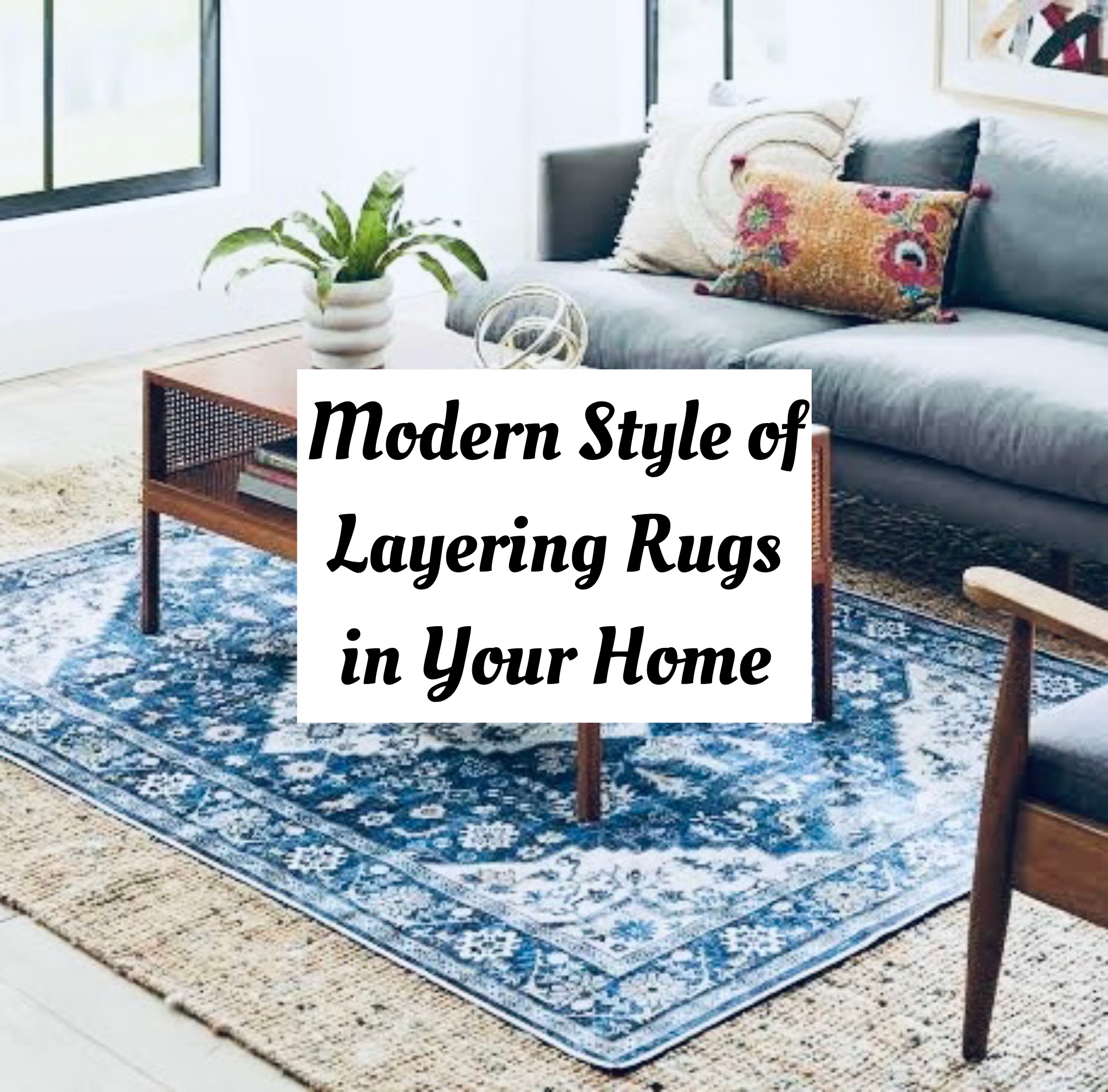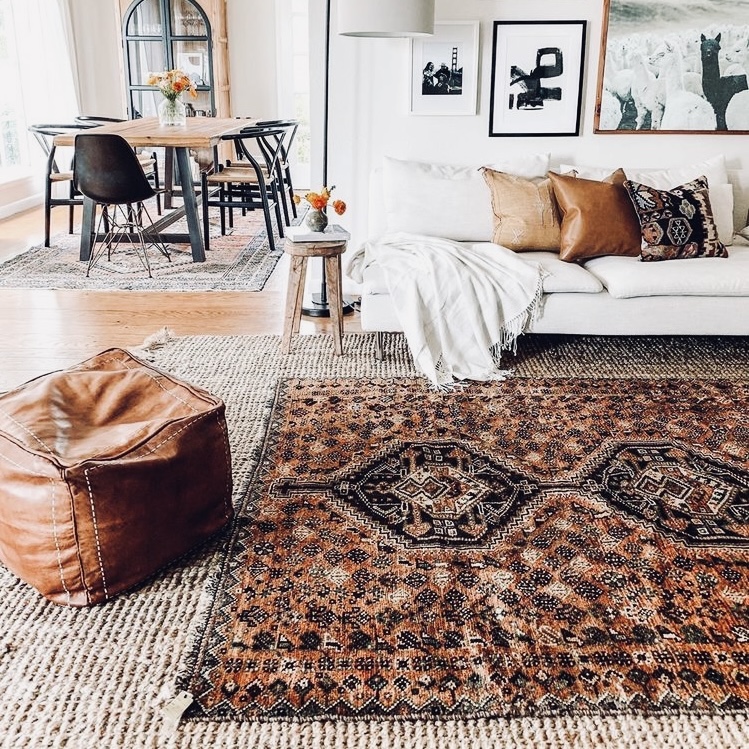Mastering Modern Style: How to Choose and Layer Rugs in Your Chicago Home
In the world of interior design, the foundation of any great room is, quite literally, what lies on the floor. For years, a single area rug has been the go-to solution for anchoring furniture and adding warmth. But for today’s design-savvy homeowners, a more sophisticated and dynamic trend is taking center stage: rug layering. This technique is the secret weapon for creating spaces that feel curated, textured, and deeply personal.
The art of how to layer rugs is particularly well-suited to the diverse Chicago home style. From the expansive, open-concept lofts in the West Loop to the classic greystones of Lincoln Park and the sleek suburban homes of the North Shore, layering adds a level of polish and warmth that elevates any interior. If you want to transform your modern living spaces from simply decorated to expertly designed, this guide will show you how.

- Talk to our experts now!
Why Layer Rugs? The Benefits Go Beyond the Visual
Rug layering is more than just a stylistic choice; it offers a range of functional and aesthetic benefits perfect for modern living.
- Adds Unmatched Depth and Texture: One of the core principles of compelling design is the ability to mix textures. Modern spaces, with their clean lines and often neutral palettes, can sometimes feel flat or cold. Layering a plush, high-pile rug over a natural fiber base like jute or sisal instantly adds visual weight and a cozy, inviting feel.
- Defines Zones in Open-Concept Spaces: Open floor plans are a hallmark of modern living spaces, but creating distinct, functional areas can be a challenge. Rug layering is a brilliant solution. A large base rug can unify the entire room, while a smaller, more decorative top rug can clearly define a specific zone, such as the primary seating area, a reading nook, or a dining space.
- Creates a Cohesive Décor: This technique is a powerful tool for tying a room together. The top rug can be used to pull in accent colors from artwork, pillows, or other accessories, creating a harmonious and cohesive décor scheme that feels intentional and professionally styled.
- Offers a Practical and Flexible Solution: Do you have a beautiful vintage rug you love, but it’s too small to properly anchor your furniture? Layering it over a larger, more affordable base rug is the perfect solution. It allows you to showcase a treasured piece while still achieving the right scale for your room.
Choosing Your Rugs: The Art of the Perfect Pair
Successful layering starts with selecting the right partners. Think of it as creating a canvas and then adding the masterpiece. The best interior design rugs strategy involves choosing two distinct but complementary pieces.
1. The Base Rug: Your Foundation
The bottom rug should be the largest and will serve as the anchor for the entire space. For this layer, think practical, neutral, and textural.
- Size: The base rug should be large enough that at least the front legs of all main furniture pieces in the grouping rest comfortably on it. This visually connects everything.
- Material and Color: Natural fibers like jute, sisal, or seagrass are excellent choices. Their durability and neutral, earthy tones provide a versatile canvas that works with nearly any style. A simple, low-pile wool rug in a solid color like charcoal, beige, or cream is another fantastic option. The goal is a subtle, textural backdrop.
2. The Top Rug: Your Statement Piece
This is where you can truly express your personality. The top rug is the star of the show and should be chosen for its character, color, pattern, or luxurious feel.
- Size and Proportion: The top rug should be significantly smaller than the base—think one-half to two-thirds the size. This ensures a generous border of the base rug (at least 12-18 inches) is visible on all sides, creating the distinct layered effect.
- Material and Style: Let your creativity shine. A vintage Persian rug can add history and soul, a bold geometric pattern can inject modern energy, a plush sheepskin can offer irresistible softness, or a cowhide can introduce an organic, sculptural shape.
Mastering the Technique: Tips for Flawless Rug Layering
- Contrast is King: The most impactful layered looks are built on contrast. Mix textures by placing a soft, high-pile rug over a flatweave base. Contrast pattern by laying a vibrant, abstract design over a solid-colored foundation. You can even contrast shape by placing a round or organically shaped hide rug over a traditional rectangle.
- Harmonize Your Color Palette: While the rugs should be different, their colors need to speak the same language to maintain a cohesive décor. The top rug should share at least one or two subtle color notes with the base rug or with other accents in the room. This creates a thread of continuity that ties the entire look together.
- Mind Your Placement: Don’t feel obligated to perfectly center the top rug. An asymmetrical placement can feel more artistic and relaxed. Try placing the top rug at an angle under your coffee table or having it ground just the main sofa area. The key is to make the placement look intentional.
Layering Ideas for Every Chicago Home Style
- The Industrial Loft: In a space defined by brick, concrete, and metal, start with a large, low-pile gray or charcoal wool rug to soften the acoustics. Layer a richly colored, distressed vintage Persian on top to introduce warmth, history, and a touch of opulence.
- The Classic Greystone: Complement the traditional architecture by using a large, wall-to-wall-style sisal or jute rug as your base. Then, define the central seating area with a smaller, more formal Oriental or a modern abstract rug whose colors pull from the room’s artwork.
- The Modern Suburban Home: For a clean, contemporary feel, a large, light-neutral base rug (like a cream-colored flatweave) is perfect. Add a pop of personality by layering a smaller shag rug for texture or one with a bold, graphic pattern for a dose of modern energy.
Begin Your Layering Journey
Choosing and layering rugs is an invitation to play with color, texture, and pattern in a way that is both sophisticated and uniquely you. By starting with a versatile base, choosing a statement piece for the top, and focusing on creating a pleasing contrast, you can build a foundation for your room that is rich, dynamic, and perfectly suited to your modern life.
Ready to find the perfect pairing for your space? Visit the Rouzati Rugs showroom in Evanston. Our experts live and breathe interior design rugs and can provide personalized guidance to help you master the art of layering for your unique Chicago home style.

